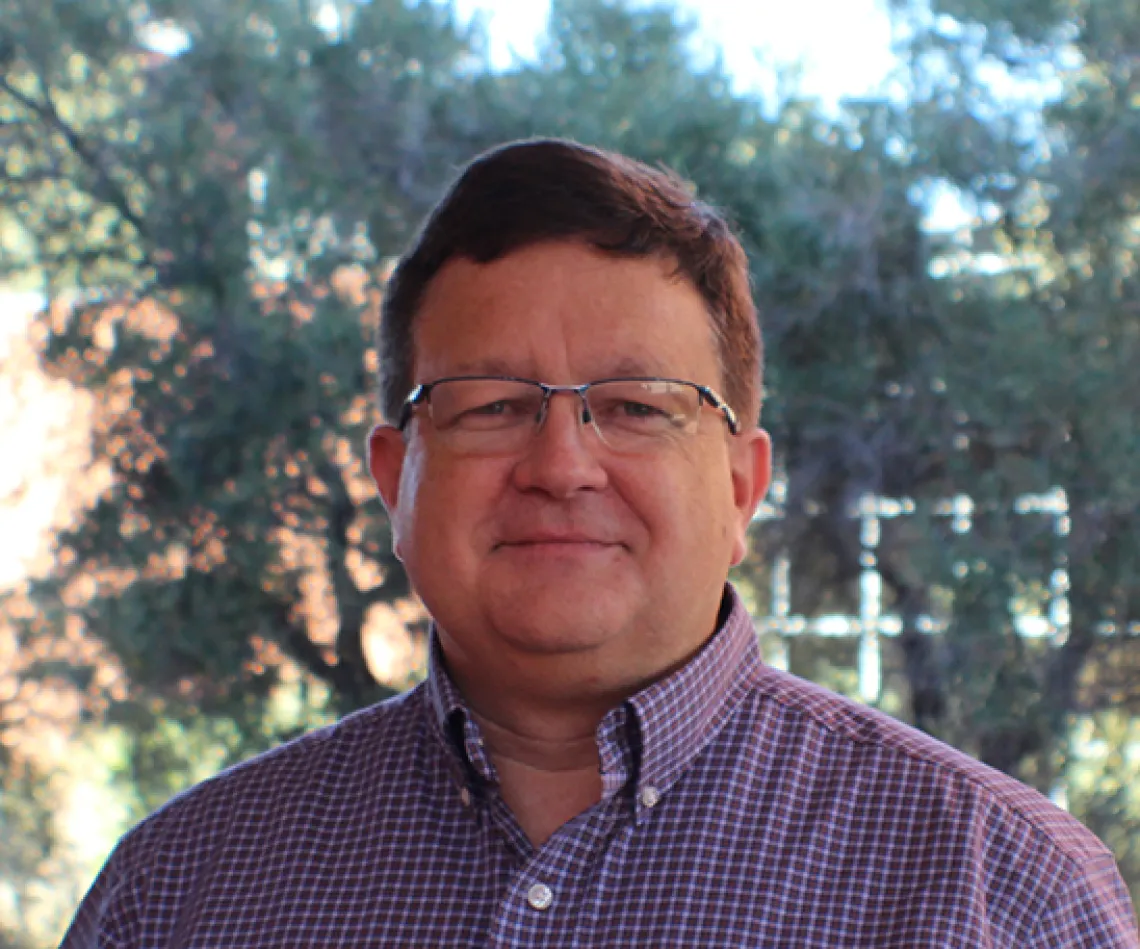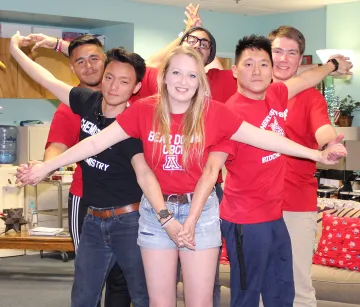WELCOME TO OUR DEPARTMENT OF CHEMISTRY AND BIOCHEMISTRY AT THE UNIVERSITY OF ARIZONA!
CBC By The Numbers
10
Research Support Services
10th
Ranked in nation for Analytical Chemistry
31st
Ranked in Chemistry among public universities
STUDENTS
134 |
Graduate Students |
420 |
Biochemistry Undergraduate Majors |
200 |
Chemistry Undergraduate Majors |
~49,000 |
Student credit hours per year taught by CBC Faculty and graduate students |
FACULTY
49 |
Tenure-track & teaching faculty |
4 |
Galileo Circle Fellows |
4 |
Regents Professors |
3 |
Endowed Chairs & Faculty Fellowships |
2 |
Distinguished Professors |
TECH TRANSFER
>10 |
Start-up Companies |
60 |
Average Number of Patent Applications Per Year |
GRANTS
$10.5M |
Total Grant Expenditures |
50 |
Grants & Contracts Awarded on Average Per Year |
Institutional Knowledge Map
The map represents a network in which the nodes are individual researchers. The edges correspond to collaborations: either joint publications or joint research proposals. Clusters represent tightly collaborating groups of researchers.
There are three types of connections: publication connections (black), grant proposal connections (grau), and both (green].
Font size represents how collaborative a person is, based on number of internal connections, number of grants, and number of publications.
The majority of researchers are in the main connected component, or the main continent on the map, while smaller connected components are islands. This is a small world network with average shortest path length of 5 on the continent, so everyone is close to everyone else. By using the first law of geography, nodes that are close to each other are more connected than nodes that are far apart. Naturally, the underlying network is dense, which is why we often just look at the map and not explicitly show all edges.
You can type in an individual's name into the KMap Search Box to learn more about research areas, publications, funding and quotes from individual researchers.








